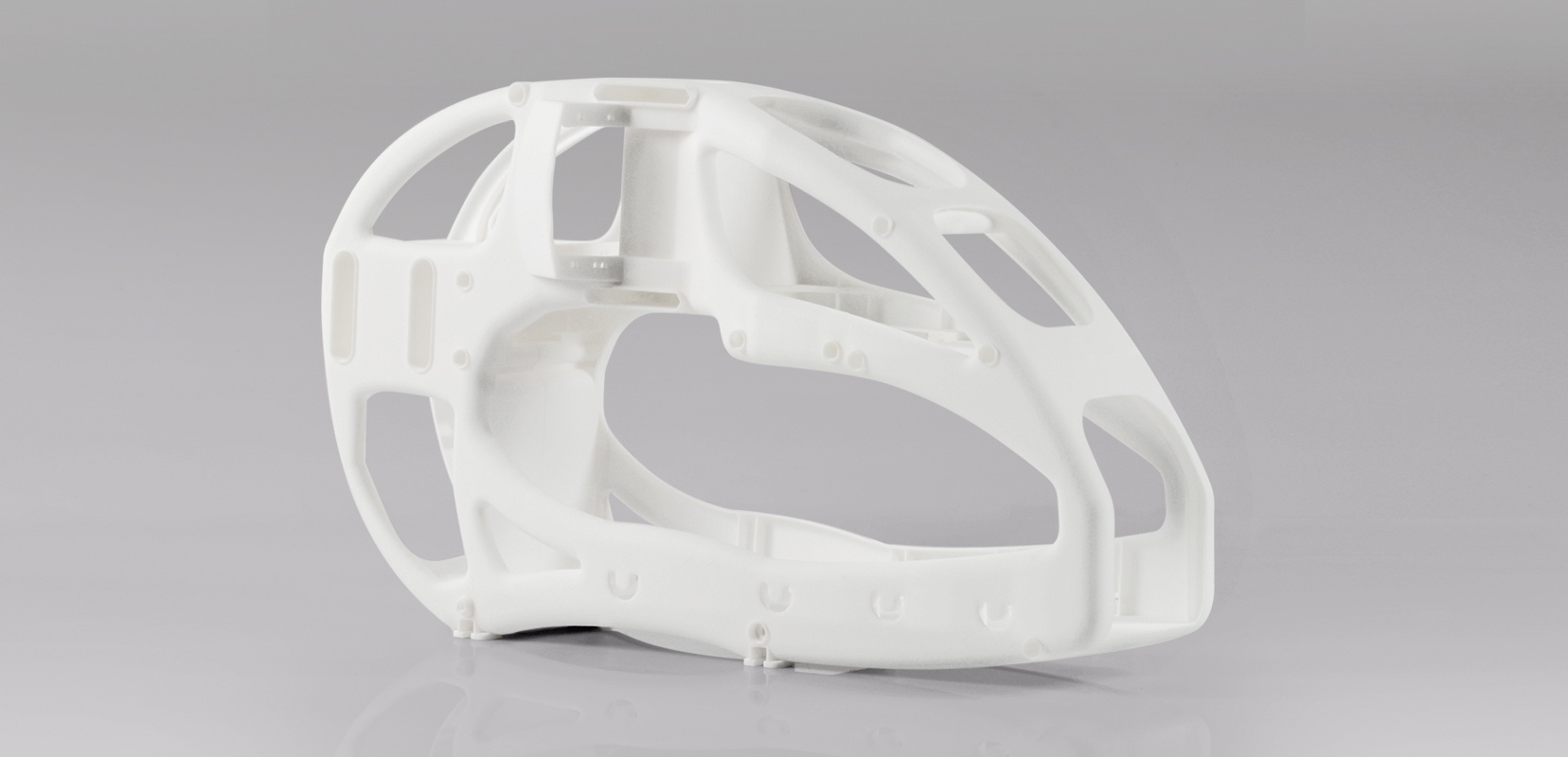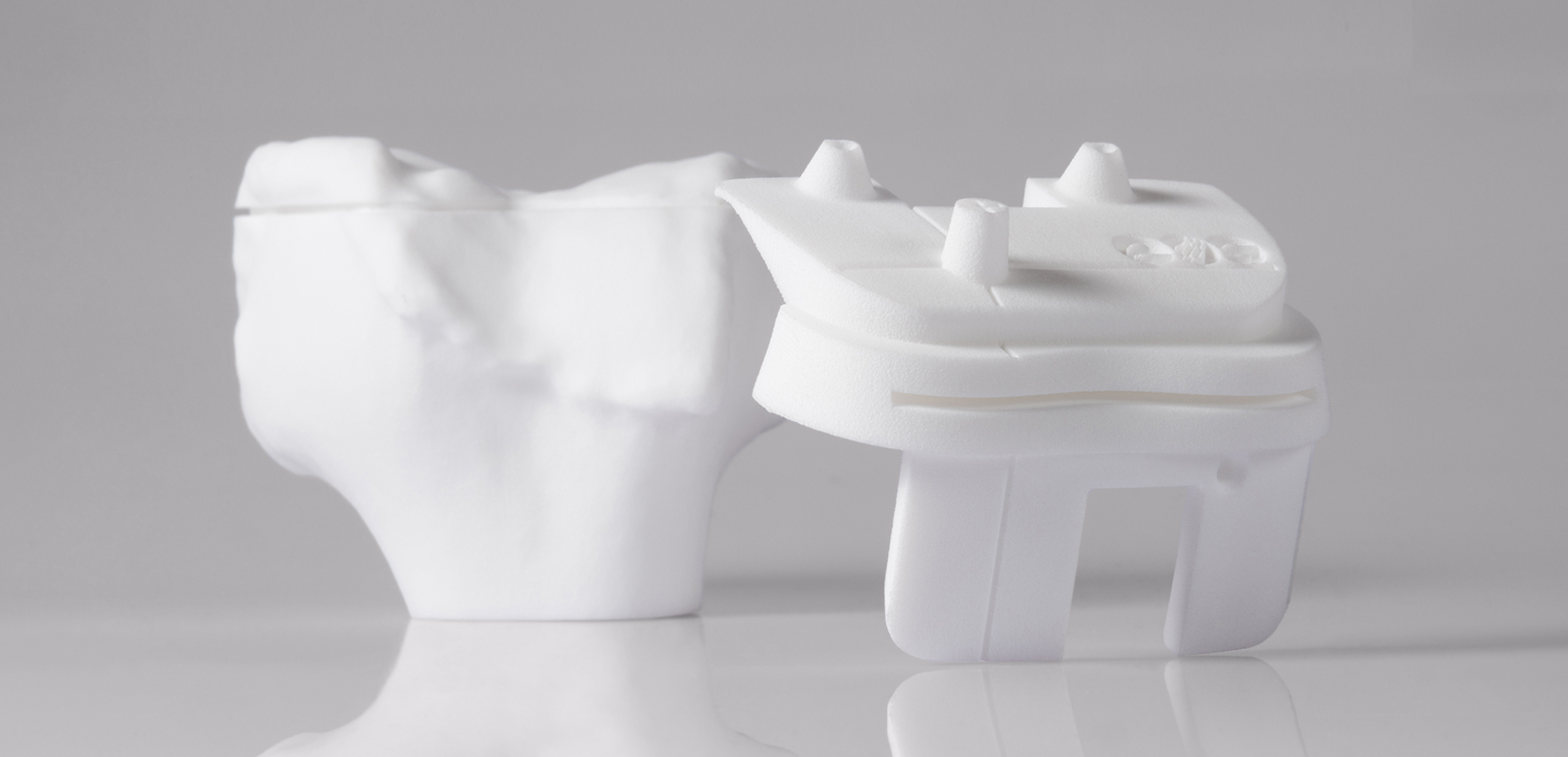
3D printing has the ability to completely transform the way products are made, but as the technology continues to become more mainstream, many manufacturers have different ideas regarding what the advantages of 3D printing are and how to apply them in relation to specific product development and applications.
Understanding Customer Applications and Needs is Key
In a recent webinar, co-presented by Shapeways, Dr. Cary Baur, Manager of Polymer Material R&D explained that the EOS Additive Minds Team is focused on understanding manufacturing customers and partners. To increase productivity, the key is to see where AM technology can be applied to make a real difference. This means tailoring a solution through:
- Identifying relevant applications
- Developing applications to fit into the product portfolio
- Creating business value
- Increasing and certifying production
SLS 3D Printing Technology Opens the Door to Expanding Productivity
Shapeways and EOS have been long-time manufacturing partners, with a focus on delivering 3D printed materials via Selective Laser Sintering (SLS). The process begins as thin layers of polymer powder are dispersed over the build platform. A computer-controlled CO2 laser traces the cross-section of the 3D design on the powder. It then scans many fine layers, fusing them all together at a high temperature, just under the melting point, until the 3D printed structure is complete.
“In the end we’re able to build parts with very fine features and details,” said Baur. “For the most part, we use fairly common engineering plastics that tend to translate well to applications that are already out there and maybe being used via other methods too, like injection molding or CNC machining.”
Baur also points out that in looking at many 3D printed parts it becomes obvious how difficult it would be to manufacture such complex geometries any other way.
A great by-product of powder-bed fusion is unsintered powder surrounding and stabilizing parts during printing, acting as a natural support. In re-using powder while also preserving material integrity, Shapeways contributes to increased sustainability in manufacturing, lessening environmental impact. Without a need for supports, the benefits are triplefold. Much greater design freedom is afforded to the industrial engineer creating the 3D model, hundreds of parts may be included in one build through nesting, and the potential for damage during post-processing is greatly decreased.
SLS industrial 3D printers can range in build volume size; for example, smaller printers may have a build volume of 200 mm x 250 mm x 330 mm, but printers from EOS can range in build volume from 650 mm x 350 mm x 550 mm to 700 mm x 380 mm x 580 mm, with a layer thickness of 100 to 120 microns.
“What this technology really does in terms of creating value is it allows you to take a digital file and implement it with what is essentially a ‘design freedom toolbox,’” said Baur. “This new freedom offers the ability to look at design and manufacturing in a whole new way, along with designing components to fit in with each other during printing and reducing the number of parts.”
Rapid Prototyping Accelerates Product Development
Initially rapid prototyping was the whole point of 3D printing; however, as the technology has evolved since the 1980’s, the ability to prototype and to create iterations on an as-needed basis has only become more enticing; in fact, a dedicated customer may order one or two–or a hundred prototypes–until deciding on the best form and fit for a high-performance, end product.
Extremely helpful in the early phases of working on a project, rapid prototyping plays a prominent role in so many applications today, behind the development of everything from architectural pieces to fine jewelry. Designers and engineers often end up making end-use parts with the same material they were testing and refining products with. Nylon 12 [Versatile Plastic] 3D printed with SLS technology is a perfect example.
“Rapid prototyping allows you to dip your toes in the water in the sense that you can build geometries up front, investigate product failure, and integrate improvements into the products,” said Baur.

Customization and Functional Integration are Driving Change
The ability to customize is one of the most appealing benefits of 3D printing. It’s no longer a one-size-fits-all world, with customer demand motivating manufacturers to offer greater personalization. In terms of applications like medical 3D printing, products and devices can be tailored completely to an individual, changing the face of that particular industry forever with the ability to offer better and better patient-specific treatment–in and out of the operating room.
Mass customization also allows businesses to look further into their development process and consider how they can be more in tune with their customer base. This includes examining what types of products they want in a particular shape or size, and building them on-demand. With the ability to set up customized 3D printing as needed, whether in low-volume or mass production, businesses can say goodbye to the expense of buying their own equipment or storing inventory where it just gathers dust in a warehouse. Shapeways does all the work from the ordering process to product fulfillment and delivery.
“There is a very strong business case for converting as many aging parts as possible to digital files, so they are available when needed–and without having these massive warehouses full of aging parts just sitting there,” said Baur.
With the ability to design nearly anything, manufacturers can use 3D printing to make custom parts that used to be very bulky but are now significantly reduced in mass, lighter in weight. Material inputs can be reduced dramatically too along the same lines. With functional integration, parts that used to have to be machined or molded separately and assembled with different processes can now be made in one large print build.
“You can actually make a real difference in how many components you’re using to make a functional part work,” said Baur.
With a focus on both metal and polymers, Shapeways and EOS are continuing a partnership that means bringing the most advanced materials and technology together for ongoing growth in product development–transforming manufacturing with a focus on reducing material waste, sustainability in processes, and opportunities for greater efficiency.
“A large part of our business is helping to identify the needs of our customers specific to an application,” said Baur. “If we don’t have a current material that meets customer needs, we often can make it, and often we will help enable our customers by working with Shapeway to then look at a material and a production process, with Shapeways filling the production need with the EOS material.”
About Shapeways
Contact Shapeways now to enjoy the benefits of advanced technology and materials for manufacturing creations with accuracy, complex detail, and no minimum or limits in terms of mass customization or single part orders. Shapeways has worked with over 1 million customers in 160 countries to make over 21 million parts! Read about case studies, find out more about Shapeways additive manufacturing solutions, and get instant quotes here.

